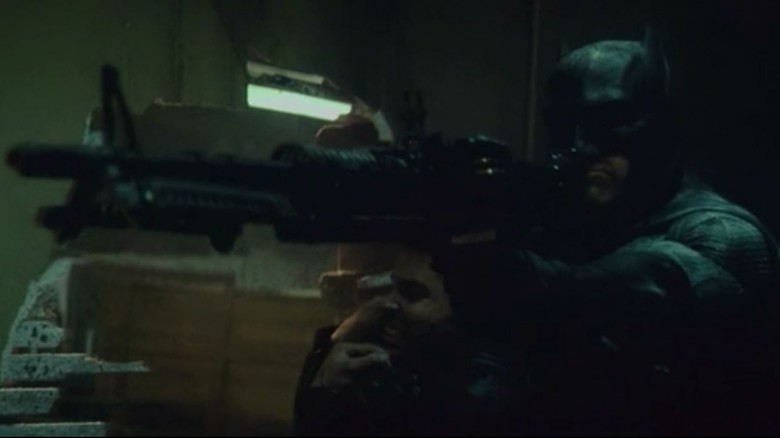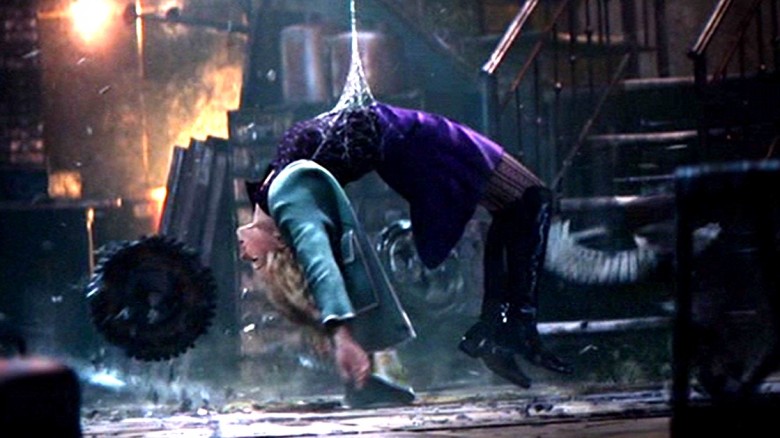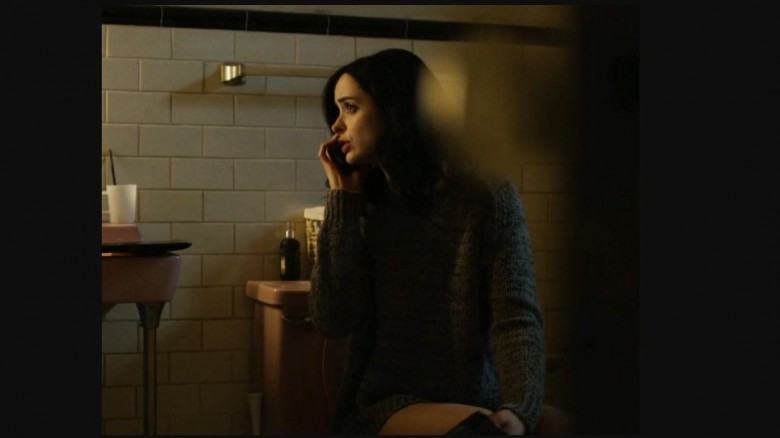The Secret Origins Of The Most Epic Superhero Movie Scenes
It's always a challenge to adapt a comic book series into a movie. Filmmakers must be able to create something accessible to mainstream viewers while still paying appropriate homage to the comics and the superfans who love them. Every now and then, the movies go all out by recreating live-action versions of iconic comic book panels and covers. Disney-owned Marvel, Warner Bros., and even Sony have gotten into the game by bringing classic comics panels to dynamic life on the silver screen. It's pretty easy to miss these moments, but we've created a handy guide to everything from back-breaking Banes to half-naked heroes!
Bane Breaks the Bat
When Bane physically beat Batman in the Dark Knight Rises, it was a pretty shocking moment—at least for fans who hadn't read the comics. In Christopher Nolan's Batman movies, we saw few foes who could really go toe-to-toe with Batman. Even his greatest nemesis, the Joker, posed little physical threat to the Caped Crusader. All of which made it all the more surprising to see Bane lift Batman and break his back. For casual moviegoers, this scene might have come as a big surprise, but for longtime Bat-fans, the image was instantly recognizable.

The movie is paying homage to the comics' Knightfall arc, in which Bane sussed out that Bruce Wayne was Batman and decided to test his foe's strength by busting most of his worst foes out of Arkham Asylum and unleashing them on the city. After Batman was good and exhausted, the less-than-sporting Bane busted into the Batcave, wiped the floor with him in hand-to-hand combat, and finally broke him. A key difference in the comics: it took Batman many long months of professional physical therapy to recover.
Hawkeye and Ant-Man team up
One of the best parts of Captain America: Civil War was seeing different heroes interacting. While that was also the main draw of the Avengers movies, this was the first time older characters like Hawkeye interacted with newer heroes like Ant-Man onscreen. The funniest and most charming instance came when an expert arrow fired by Hawkeye was used to deliver a miniaturized Ant-Man into the battle. It was like nothing audiences had seen onscreen before, but for comics audiences, it offered a recreation of a very memorable comic cover.

The cover of The Avengers #223 depicts Hawkeye in all his purple glory, about to fire Ant-Man from his bow. The circumstances were a bit different in the comic, however. Instead of playing their part in a hero-on-hero battle royale, Hawkeye and Ant-Man are fighting the villainous Taskmaster and his henchmen. The two are able to defeat his men, but when Taskmaster fires an explosive at a carnival crowd, the two heroes must let him go in order to save lives. The issue showcased that the two made an unexpectedly good team, just as they would years later on the silver screen.
Batman the Gunslinger
Martha Kent ended up playing an unexpectedly prominent role in Batman v. Superman. Hearing that Superman also has a mother named Martha is enough to pierce Batman's cloud of rage, and he teams up with Superman to save Martha Kent and stop Lex Luthor. However, Luthor is a good student of over-the-top drama and has a henchman on standby, waiting to kill Martha with a flamethrower. In order to stop him, Batman is forced to uncharacteristically pick up a machine gun and kill him before dramatically leaping out the window with Martha. Like many aspects of Batman v Superman, this particular striking image came from Dark Knight Returns, though the comics circumstances were different.
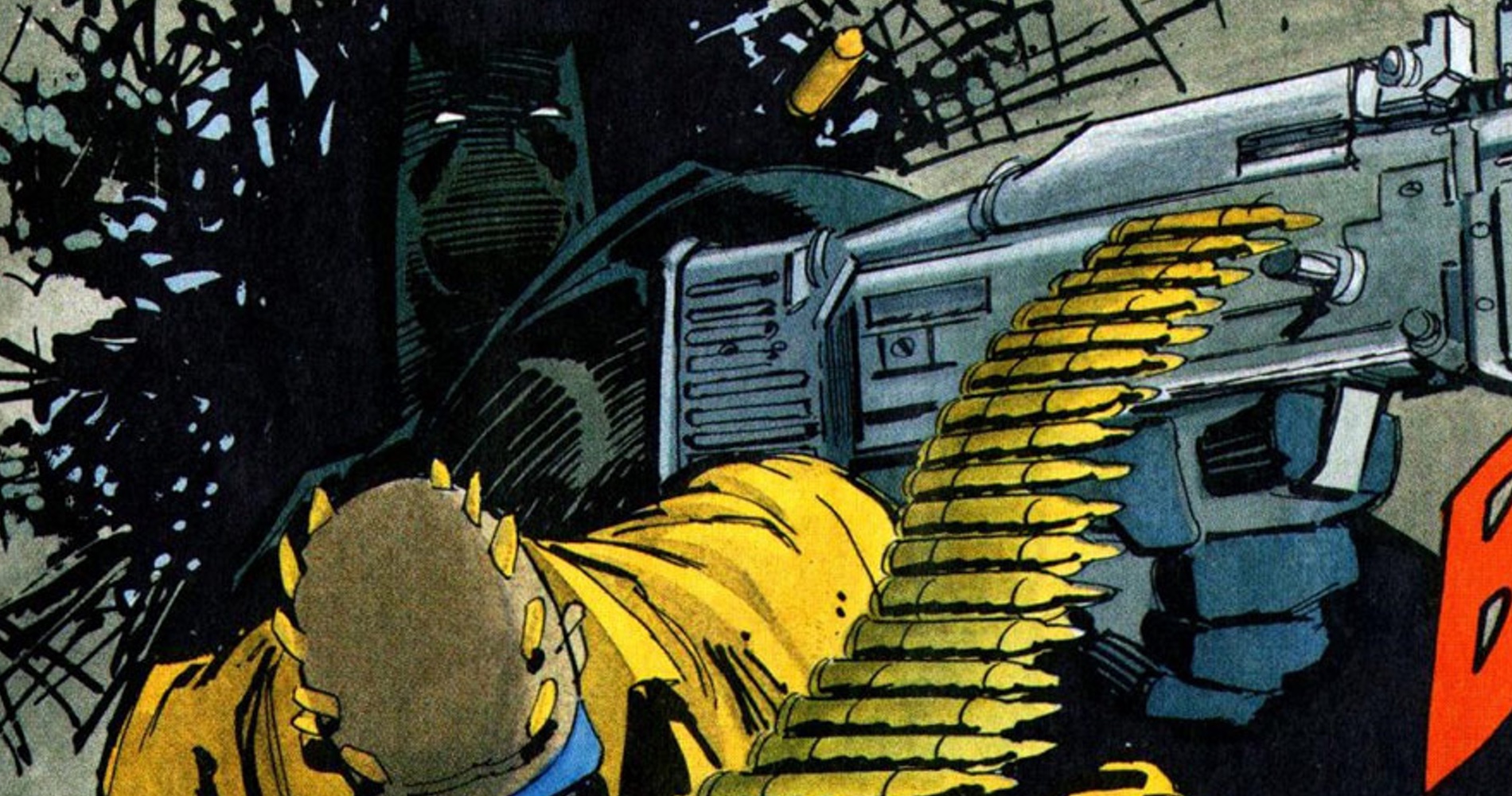
In the comic, the street gang known as the Mutants kidnapped the child heir to the Ridley chewing gum fortune and were holding him ransom. They were planning to kill the child after they got paid, but Batman showed up to stop them. The last Mutant left standing held a gun to the child's head and threatened to murder the young heir; left with no choice, Batman used a machine gun dropped by a defeated Mutant to shoot her and save the child. Both Miller's art and writing leave the kidnapper's fate ambiguous, a marked departure from the huge explosion in Batman v Superman that likely kills Martha's tormentor as well as most of the people Batman had already knocked out.
Captain America vs. Iron Man
This is one of the most iconic images from Captain America: Civil War. While many were excited to see so many Avengers packed into a movie, everyone knew the real fight of the feature was the title bout between Captain America and Iron Man—a conflict spurred by ideology as much as personality. The two friends were fighting over the issue of whether superpowered heroes should be bound by government restrictions and oversight, and the image of them locked in battle perfectly encapsulated their struggle while also bringing a famous comics panel to life.

Unlike some of the entries on this list, the circumstances behind this particular fight in the comics were pretty similar. Instead of the Sokovia Accords, the heroes are fighting over the Superhero Registration Act that would similarly put superheroes under governmental oversight and control. While the incident that starts this in the MCU is the destruction of Sokovia, the Civil War comics story begins when a superhero reality show ends up causing a supervillain to detonate himself near an elementary school, killing hundreds of children. And finally, the main issue with registration in the comics is that it would force characters like Spider-Man to reveal their secret identities. In the MCU, almost all of the heroes' real identities are already known, so this was less of an issue in the movie.
Superman Returns (with a car)
Superman Returns is something of a red-headed stepchild among DC's live-action movies, suffering in the shadow of the original Richard Donner Superman movies (which Superman Returns tried painfully to emulate) as well as Batman Begins. Now, it's been bumped aside by Henry Cavill's Superman, as Warner Bros makes a push to create its own cinematic universe—which is a shame, because in many ways, Superman Returns emulated the comics it's based on far more accurately. One such example involves Superman saving Lex's assistant (though he doesn't know that) by catching her car. Visually, this is almost a perfect recreation of an iconic comics scene.

The scene in question is actually the cover of Action Comics #1, the very issue in which Superman and many of his friends make their debut. For casual fans of the modern Man of Steel, lifting a car may seem like no big deal, but it's worth noting that when Superman first appeared, he wasn't quite as powerful as he'd become. For instance, he couldn't fly, just leap really high. At the time, the idea of someone casually lifting a heavy car above his head was something spectacular to behold, and Brendan Routh's Superman captured the wonder of the moment nicely decades later.
Death of Gwen Stacy
Even fans who knew the character's fate in the comics were a bit shocked at the death of Gwen Stacy in The Amazing Spider-Man 2. Sony had flirted with this kind of thing before, after all, without following through. In the first Sam Raimi Spider-Man, Green Goblin threw Mary Jane off of a bridge—just as he did to Gwen in the comics—and she survived. In Raimi's third Spider-Man, Gwen survived death and danger multiple times. Emma Stone's Stacey definitively dies, however, and actually recreates one of the saddest scenes in comics.
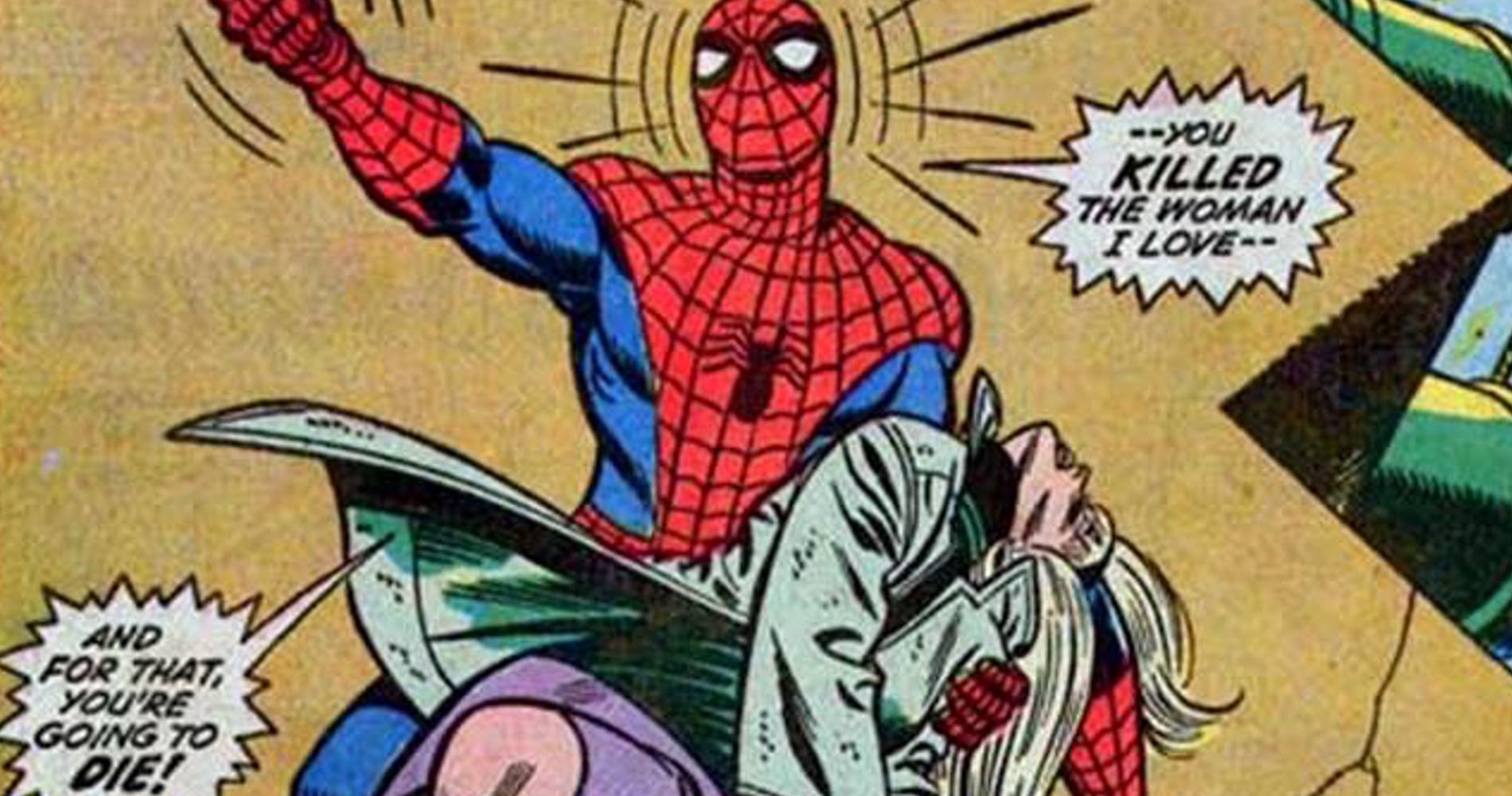
There are some big similarities between the onscreen and on-panel deaths. There are also some major differences, however. In the comics, Stacy is killed by the older, original Green Goblin, Norman Osborn; in the movie, she's killed by his son Harry. The movie also makes it very clear that Green Goblin killed her, as her body hits the ground before Spider-Man is able to pull her up. In the comics, Spider-Man catches her with a web while she falls, which leads to her fatally snapping her neck. In the comics, he's haunted for many years (at least, depending on who's doing the writing) by the idea that she might have actually survived her fall if he hadn't tried to save her.
Dark Knight going (and returning)
Regardless of the overall quality of Batman v. Superman, it was tough for superhero fans not to get excited about the final fight against Doomsday. For the first time, DC's heroic trinity of Batman, Superman, and Wonder Woman appeared onscreen together. However, most of the fighting against the out-of-control alien monster was done by Superman and Wonder Woman. Batman mostly serves as a distraction for the creature, though he later provides a pivotal Kryptonite gas pellet to weaken Doomsday. During the conflict, there's a brief moment of Batman silhouetted against some lightning. To the casual filmgoer, that was just one shot out of a series of frenetic scenes. To comic fans, however, that was an homage to one of the absolute greatest comics ever made.
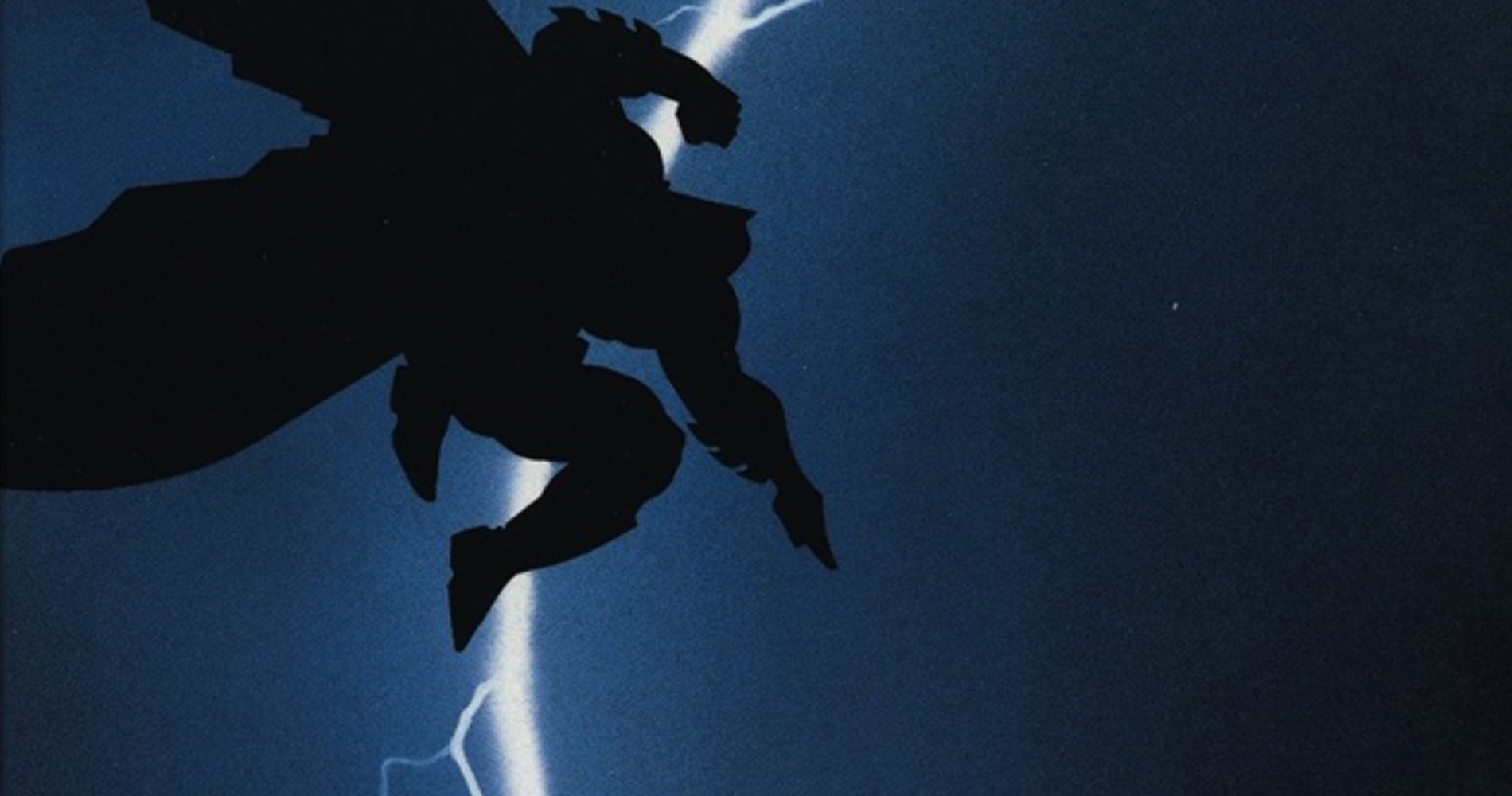
The image of Batman silhouetted against lightning is emblazoned across the cover of the Dark Knight Returns trade paperback. And while that lightning seemed like it was only part of the general ambiance in Batman v Superman, it is more symbolically tied to Batman in Dark Knight Returns, which opens with an older Bruce Wayne who's retired from the superhero life, but increasingly dismayed to see his city consumed by violent crime. During a storm that a TV weatherman describes as something "like the wrath of God," Batman decides to suit up once more, metaphorically becoming the purging storm he feels Gotham needs.
Captain America Punches Hitler
One of the unexpectedly amusing developments in the first Captain America movie's story comes when the American government doesn't know exactly what to do with Cap after Dr. Erskine dies, and he ends up as part of the propaganda machine for his country, performing at USO shows during which he frequently punches actors portraying Adolf Hitler. While it serves as a funny moment for the audience (particularly when Steve Rogers recalls knocking out Hitler more than 200 times), these scenes are a direct homage to some of Cap's most famous comic book imagery.

Specifically, it's an homage to Captain America's very first issue. The character of Cap actually predates Marvel Comics, so this is a cover of the first issue printed by Timely comics, and true to their name, they had a timely image for a comic published in 1941: Hitler getting knocked out by our hero. This comic and character were instantly popular, and the success of the modern cinematic Captain America can arguably be traced directly back to the number of fans who were excited to see America's best soldier punching out one of humanity's worst villains. And while certain aspects of Cap have changed since that first issue, the idea of a pure (and pure-hearted) patriot has always been central to the character's success.
Batman Defeats Superman
Despite the fact that their inevitable fight was literally spelled out in Batman v Superman's title, many were taken aback by the sheer brutality of the conflict between Batman and Superman. In large part because of his weaponized Kryptonite, Batman manages to win the fight, and he's about to straight-up murder Superman when the Man of Steel mentions that "Martha's" life is on the line. Batman relents, but not before he places his boot on Superman's neck. For casual moviegoers, this is just another grim scene during the battle...for comic book readers, however, it looks more than a little familiar.

As mentioned earlier, large parts of Batman v. Superman were adapted from the Dark Knight Returns comic. Some of these elements include the very idea of Batman and Superman engaging in a brutal fight, as well as Batman's bigger, badder suit. In the comic, like the movie, Batman defeats Superman and dramatically monologues while standing over his body. There are a couple of differences, though, the most obvious being that the comic book Batman puts his hand on Superman's throat, whereas the movie Batman puts his boot down. In the movie, Batman needs his hands free because he plans to murder Superman with a Kryptonite spear; in the comic, he had no intention of actually killing Superman, believing it was better that Superman always remembered he was beaten by a mortal man.
Stick and Stone
Marvel hasn't been content to dominate the silver screen with their comics adaptations—they've brought their characters to television, too. It all started with the first season of Netflix's Daredevil, which did an admirable job of telling a unique story about the origins of the hero while paying homage to the original comics. At the end of Daredevil's seventh episode, his former mentor Stick consults with his lieutenant, Stone; the conversation is brief, and its emphasis is on whether Daredevil will be ready for what Stick and Stone perceive to be a coming battle. As it turns out, this is an amazingly accurate representation of a Daredevil comics panel.

In the comics, the characters have almost the exact conversation. In the show, Stone is concerned about whether Daredevil will be ready when the doors open; in the comics, he's a little more explicit, identifying Daredevil and Elektra as two of the only "adepts" that could help their order fight its enemies. Stick questions this in both versions, wondering whether Daredevil is ready and if including him might end up compromising their group.
Caught with her pants down
After Daredevil, Jessica Jones expanded Netflix's Marvel lineup. While many wondered if Marvel would copy their successful Daredevil formula, the company instead told a down-to-earth story about a superpowered woman trying to survive from day to day and escape the traumas of her past. One of the images that encapsulates this shows Jessica Jones lying to someone on a phone call as a way of gathering information. Rather than doing this in an office or other professional setting, she's shown sitting on the toilet, a perfect metaphor for how she has difficulty dividing her professional and personal lives. As it turns out, it was a nearly perfect recreation of a scene from the Alias comics in which the character premiered.
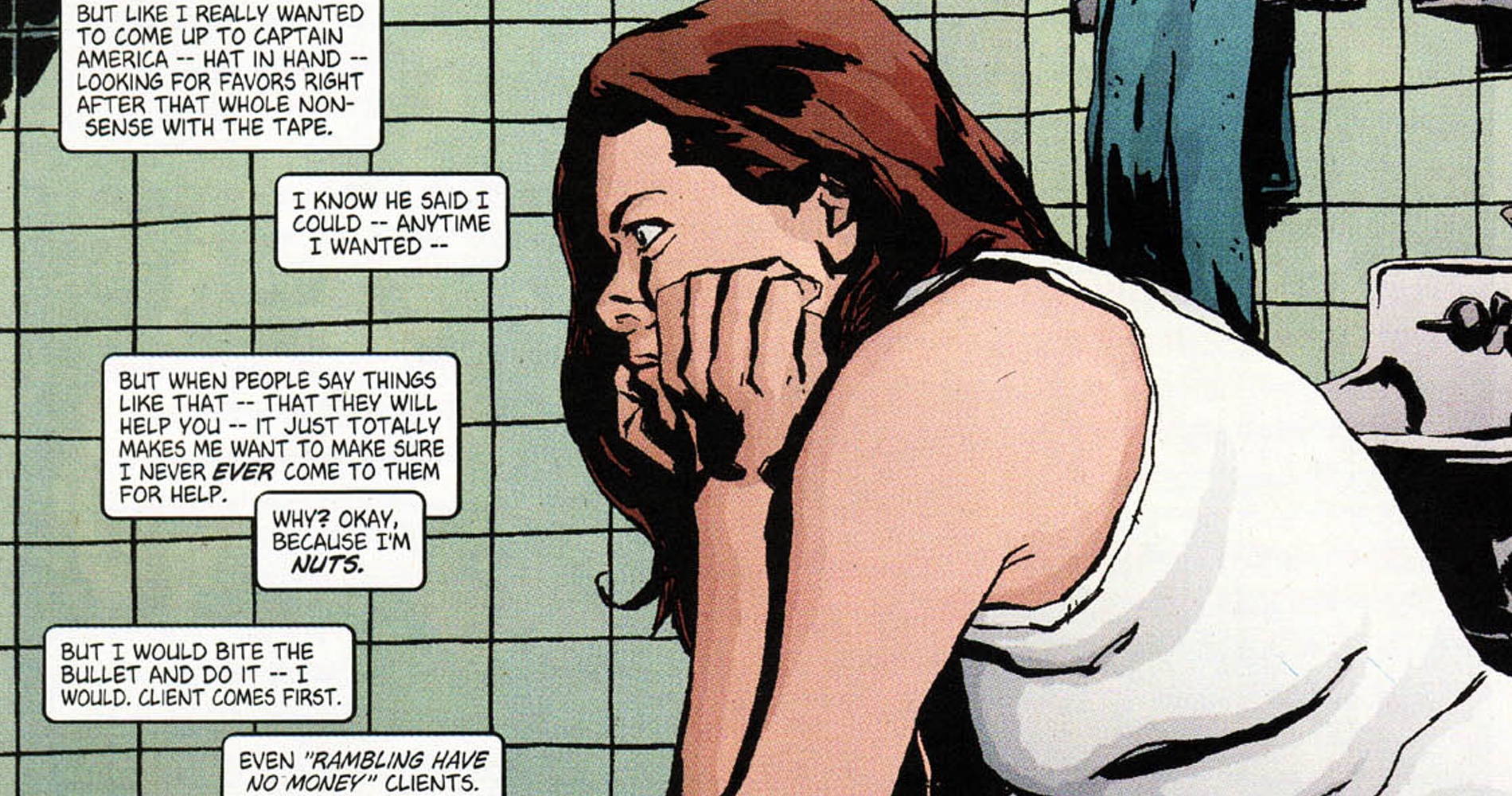
In the comics, Jones is also ignominiously posed on the toilet while dealing with work-related issues, but she isn't calling someone to get information; rather, she's thinking about a prospective client and whether her story checks out. True to form, she is also thinking about how much she doesn't want to ask anyone for help on this particular case, determined tackle it alone...presumably after pulling her pants up.



